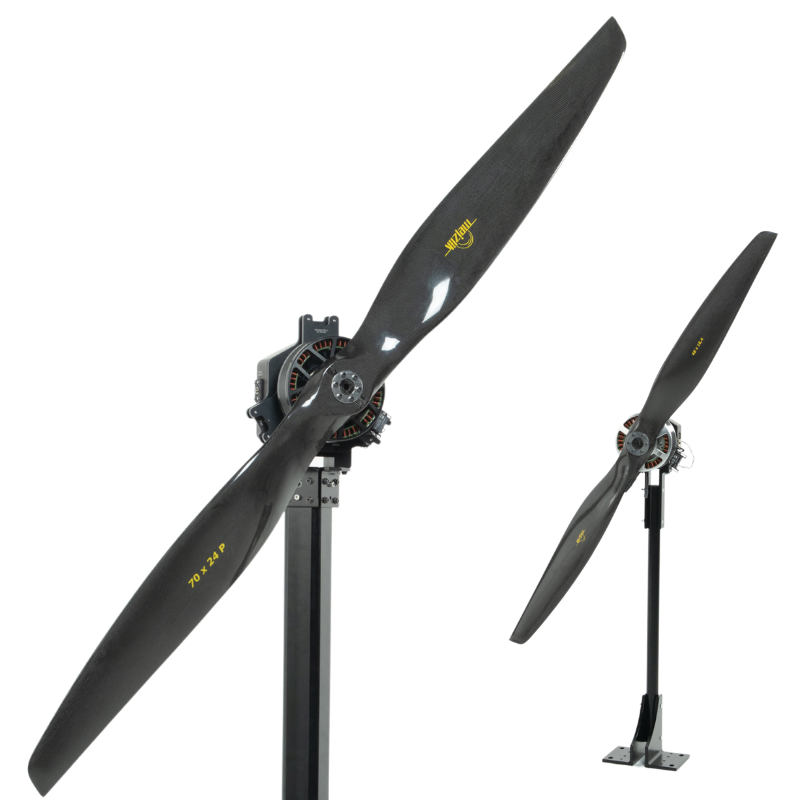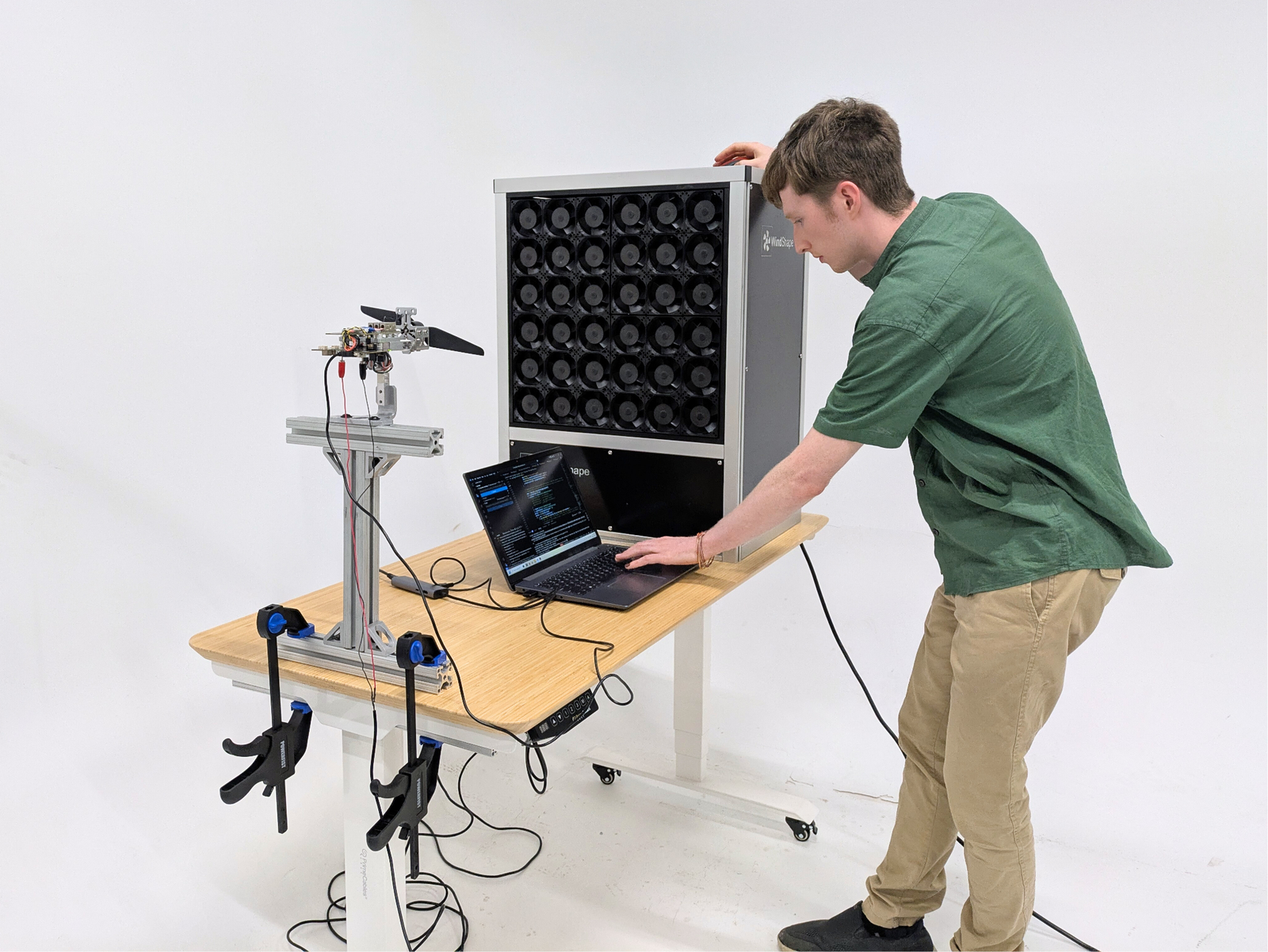If you have operated a drone, there's a good chance you've noticed an unnatural wobble in it's footage at some point. This distortion typically looks like someone jiggled the camera while filming, creating an effect known as "Jello effect." The symptom earned its nickname due to its resemblance to the popular dessert, but it is more formally known as rolling shutter effect.
This article explains what causes Jello effect, the key differences between shutter types, and how you can fix rolling shutter effect.
Table of contents
-
Causes of Jello effect
- Propeller imbalance
- Shutter types: Rolling, global and mechanical shutter
- How to fix rolling shutter effect
Figure 1: Jello effect in landscape drone footage (Bob Hodge)
Causes of Jello Effect
The Jello effect in drone footage is caused by two main factors: the vibrations produced by the drone itself and the method by which the drone’s camera sensor captures frames.
Propeller imbalance and vibration
Propeller imbalance is known to cause undesired vibrations that can reduce the drone's flying efficiency. In addition to flight performance, vibration can affect a drone’s other functions, such as aerial videography and data collection, which rely on a steady video stream.
Further reading: How to Reduce Propeller Vibration in UAVs
Drone cameras are typically mounted on gimbals, which are designed to absorb micro-vibrations. However, not all high-frequency vibrations can be dampened, and they may lead to distorted camera footage.
Propeller and motor imbalance is the most common cause of instability and excess vibration. An imbalanced propulsion system accelerates the wear of mechanical components, contributing to failure in bearings and motors. This creates a positive feedback loop of vibration that spreads throughout the drone.
This video is a great example of this effect in action. Prior to rotating the propellers, the video feed is clear and smooth. As soon as the propellers start rotating, the footage takes on a Jello effect, demonstrating the link between propeller stability and video quality.
Figure 2: Jello effect captured on the ground with a mini drone
Rolling, global and mechanical shutter
We have discussed what Jello effect is and when it occurs, but now let’s look at why it happens. It all comes down to camera shutter.
Drone cameras may use an electronic shutter, such as rolling or global shutter, or, more rarely, a mechanical shutter, like focal-plane or leaf shutter.
Rolling shutter is a readout method commonly used in cameras with CMOS sensors, which are ideal for use in drones due to their lower power consumption and cost-effectiveness. The CMOS sensor works by capturing the image line by line, similar to an inkjet printer.
However, rolling shutter distortion is ultimately responsible for the Jello effect seen in drone video footage. The issue arises when vibrations in the drone cause slight shifts in camera position during image capture. Because the CMOS sensor records the image line by line, by the time it reaches the bottom of the frame, the scene may have changed slightly. This results in the unwanted "Jello effect," creating a distorted and inaccurate representation of the real-life scene.
Global shutter has recently been introduced into CMOS sensors, using a better technique that captures the entire frame simultaneously rather than sequentially, therefore resolving the issues underlying Jello effect. However, according to manufacturers, this technology is expensive and challenging to integrate.
As a result, only the most advanced drone cameras employ global shutter.

Figure 3: Rolling and global shutter light exposure differences.
Recommended for you: Testing Single Blade Propellers
There are two main types of mechanical shutters that are standard in DSLR cameras. Focal-plane shutters use two curtains that travel across the sensor: the first opens the aperture to begin the exposure, and after the set exposure time, the second follows in the same direction to close it. Leaf shutters use overlapping blades that open and close from the sensor's center.
DJI added mechanical shutters to its Phantom 4 RTK and Mavic 3 series drones to remove the CMOS rolling shutter effect in surveying and mapping applications.
While mechanical shutters eliminate the issues associated with Jello effect, the MTTF of their moving parts is still exacerbated by excessive vibration, so the camera remains susceptible to degraded performance stemming from imbalance.
How to Fix Rolling Shutter (Jello) Effect
Unless you’re willing to spend big bucks, it’s hard to avoid rolling shutter and its complexities when it comes to drone cameras.
However, there are modifications you can make to limit the effect. In your settings, you can try decreasing shutter speed and adjusting light filters, or use post-filming stabilizing software to try to polish it off. That said, it won’t do much to address the root cause of Jello effect.
You can address the root cause of the issue, vibration, by upgrading your gimbals or balancing your propellers.
How to balance your propellers
At Tyto Robotics, we have developed a dynamic propeller balancing system that allows users to quantify and correct imbalances in their drone's propellers and motors.
In just a few quick spins, users can achieve ISO-grade balancing:
Figure 4: Dynamically balancing propellers by adding weights (source)
Conclusion
The Jello effect in drone footage occurs because of the line by line scanning system used for image capture in most drone cameras. When combined with high-frequency vibrations and fast-moving objects, distortions in the footage are almost inevitable.
Since you can't always control the shutter type or the nature of the scene, the best way to limit distortion is to reduce the vibrations caused by imbalanced propellers and motors, an effective way to improve video quality.
Download our white paper on Propeller Balancing Techniques to learn more:

References:
-
Phantom Pilots. What causes the Jello video effect? PhantomPilots website. Published 2016.https://phantompilots.com/threads/what-causes-the-jello-video-effect.86315/#:~:text=Unbalanced%20props%20are%20the%20most,there%20is%20more%20play%20with
-
Mosaic51. Rolling vs. global shutter: Camera effects explained. Mosaic51 website. Published 2022.https://www.mosaic51.com/technology/rolling-vs-global-shutter-camera-effects-explained/#:~:text=The%C2%A0consistency%20and%20accuracy%C2%A0of%20the%20images,%E2%80%98jello%20effect%E2%80%99%20or%20object%20segmentation
-
Wondershare Filmora. How to remove Jello effect and rolling shutter from aerial video. Filmora website. Published 2022.https://filmora.wondershare.com/drones/remove-jello-effect-rolling-shutter-from-aerial-video.html
-
DJI Enterprise. Mechanical shutter drones: The work of professional surveyors. DJI Enterprise website. Published 2022.https://enterprise-insights.dji.com/blog/mechanical-shutter-drones#:~:text=The%20work%20of%20professional%20surveyors,provide%2C%20you%20need%20a%20shutter
-
Micrathene FPV. The Jello effect: Causes, solutions, and tips for smooth video footage. Micrathene FPV website. Published 2023.https://www.micrathenefpv.com/blog/the-jello-effect-causes-solutions-and-tips-for-smooth-video-footage
-
2Bridges Productions. 5 handy tips to fix rolling shutter Jello effect in aerial footage. 2Bridges website. Published 2022.https://www.2bridges.nyc/nycblog/5-handy-tips-to-fix-rolling-shutter-jello-effect-in-aerial-footage/


 Back to Blog
Back to Blog


Leave a comment